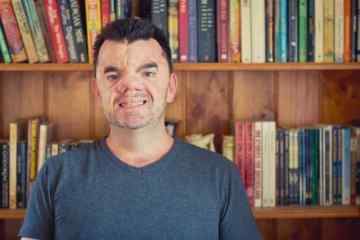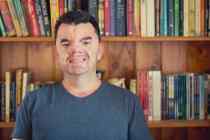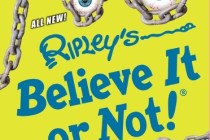Poke around the hidden recesses of history with ‘A Most Imperfect Union’
For most of your life, you’ve eaten what’s put in front of you.
Breakfast, gone. Lunch, poof. Dinner, yep. You’ve also swallowed most everything you’ve been taught in school, particularly in history class.
But did you ever think that there are two sides to it all — what you’ve learned and what others perceive? Maybe there’s more to history than what your textbooks have said, so read “A Most Imperfect Union” by Ilan Stavans, illustrated by Lalo Alcaraz, and have a bit more to chew on.
History, says Ilan Stavans, is “plastic.” One person sees things one way, someone else notices something different; we remember the big events, but not the everyday. Stavans, a “contrarian,” likes to poke around the hidden recesses of history, to see what might be missed, almost-wrong, or just interesting.
We already know, for instance, that Columbus didn’t “discover’ America. Not only did the Vikings get here long before he did, but there were people here even before that. Native Americans — a continental population now estimated at up to 100 million — had culture, religion, trade, even organized government.
But “clashes… are how the nation took shape.” Indians fought the Pilgrims, Pueblo Indians revolted against the Spanish, British colonies fought amongst themselves, and the colonists fought against the British in the Revolutionary War. Indians, by the way, were mostly on the British side.
The Colonists didn’t get much land when the war was over, but through the decades, the United States grew: the Louisiana Territory was purchased in 1803, Texas was annexed in 1845, and the southwest was ceded by treaty in 1848. As America grew, “slavery expanded with it.” That led to another war.
But war isn’t all that’s affected our nation.
Immigrants, who “know what it means not to have something they cherish,” contributed literature, food and more, all of which has had “a powerful effect on American culture.” Americans invented new transportation methods, movies, new music, photography and all kinds of science. We’ve taken good, worked through bad and made an “amazing patchwork landscape… that’s always striving for perfection.”
Want a book with a chunk of controversy between its pages? Of course you do, which is why you want “A Most Imperfect Union.”
In his introduction, Stavans explains why he enjoys “contrarianism”: he’s an immigrant himself, which gives him an individual perspective on American history and an inclination to question things that he believes need questioning.
And you’ll find plenty of thought-provoking here in a fascinating everything-old-is-new-again way, since similar events from decades ago are again in the news. Because of those fresh outlooks on old-new issues, Stavans’ POV and Alcaraz’s drawings may lead you to some reflection of your own this school year.
If you’re the kind of person who enjoys creating your own opinion about old tenets, if you love dissention and debate, or if you want the kind of history book your father never had, then this is a book you need. For you, start “A Most Imperfect Union,” and you’ll eat it right up.
View publishes Terri Schlichenmeyer’s reviews of books for teens and children weekly.
About the Book
"A Most Imperfect Union" by Ilan Stavans, illustrated by Lalo Alcaraz
c.2014, Basic Books $25.99 / $30.00 Canada 269 pages
























